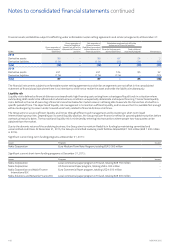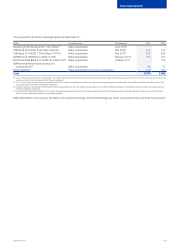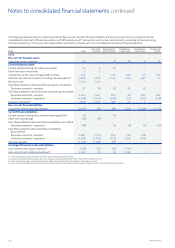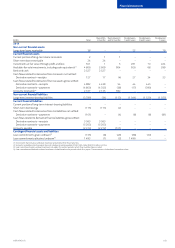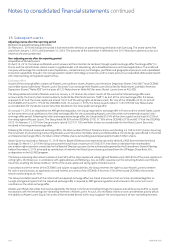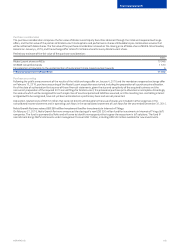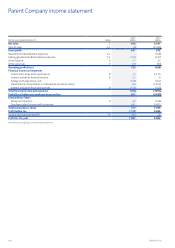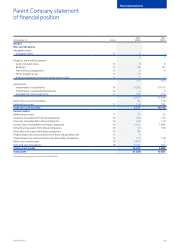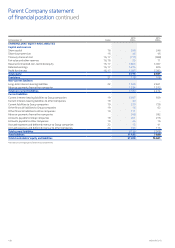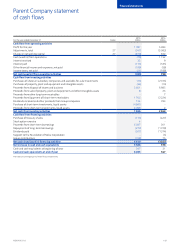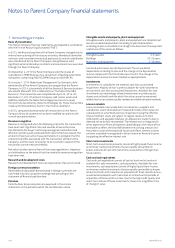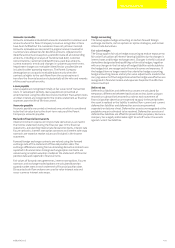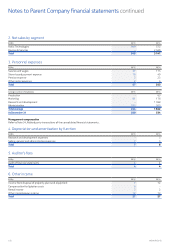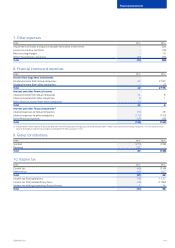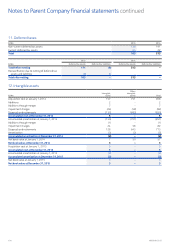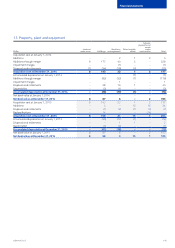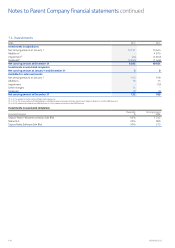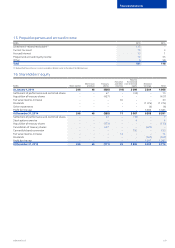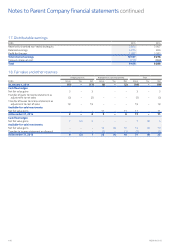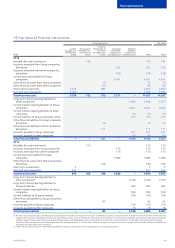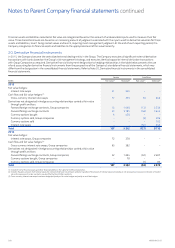Nokia 2015 Annual Report Download - page 192
Download and view the complete annual report
Please find page 192 of the 2015 Nokia annual report below. You can navigate through the pages in the report by either clicking on the pages listed below, or by using the keyword search tool below to find specific information within the annual report.
190 NOKIA IN 2015
1. Accounting principles
Basis of presentation
The Parent Company nancial statements are prepared in accordance
with the Finnish Accounting Standards (“FAS”).
In 2015, the nancial position of the Parent Company changed due to
internal restructuring of the treasury activities, whereby all derivative
contracts and investments executed previously by certain subsidiaries
were transferred to the Parent Company. Going forward, most
signicant external derivative contracts and investments are executed
through the Parent Company.
On December 4, 2015 the Parent Company sold the shares of
subsidiaries in HERE Business to a consortium of leading automotive
companies, comprising AUDI AG, BMW Group and Daimler AG.
On January 1, 2014 Nokia Asset Management Oy, formerly a fully
owned entity of the Parent Company, was merged into the Parent
Company. In 2014, substantially all of the Devices & Services business
was sold to Microsoft. This is referred to as “the Sale of the D&S
Business”. The transaction was completed on April 25, 2014. On
December 31, 2014 the Parent Company sold certain assets and
liabilities related to the Nokia Technologies business to a newly
formed, fully owned entity, Nokia Technologies Oy. These transactions
make up the Extraordinary items in the income statement.
In 2015, comparative presentation of certain items in the Parent
Company nancial statements has been modied to conform with
current year presentation.
Revenue recognition
Revenue is recognized when the following criteria for the transaction
have been met: signicant risks and rewards of ownership have
transferred to the buyer; continuing managerial involvement and
eective control usually associated with ownership have ceased; the
amount of revenue can be measured reliably; it is probable that the
economic benets associated with the transaction will ow to the
Company; and the costs incurred or to be incurred in respect of the
transaction can be measured reliably.
Net sales includes revenue from all licensing negotiations, litigations
and arbitrations to the extent that the criteria for revenue recognition
have been met.
Research and development costs
Research and development costs are expensed as they are incurred.
Foreign currency translation
Receivables and payables denominated in foreign currencies are
converted into euro using the exchange rate prevailing on the
statement of nancial position date.
Pensions
Contributions to pension plans are expensed in the income
statements in the period to which the contributions relate.
Notes to Parent Company nancial statements
Intangible assets and property, plant and equipment
Intangible assets and property, plant and equipment are stated at cost
less accumulated depreciation according to plan. Depreciation
according to plan is recorded on a straight-line basis over the expected
useful lives of the assets as follows:
Intangible assets 3–7 years
Buildings 20–33 years
Machinery and equipment 1–10 years
Land and water areas are not depreciated. The accumulated
depreciation according to plan and the change in the depreciation
reserve comply with the Finnish Business Tax Act. The change in the
depreciation reserve has been treated as appropriations.
Investments
Investments in subsidiaries are stated at cost less accumulated
impairment. Majority of non-current available-for-sale investments
are carried at cost less accumulated impairment. Available-for-sale
investments are technology-related investments in private equity
shares and unlisted funds for which fair value cannot be measured
reliably due to non-existent public markets or reliable valuation methods.
Loans receivable
Loans receivable may include loans to customers, suppliers and
subsidiaries. Loans receivable are measured initially at fair value and
subsequently at amortized cost less impairment using the eective
interest method. Loans are subject to regular review as to their
collectability and available collateral. An allowance is made if a loan is
deemed not to be fully recoverable. The related cost is recognized in
other expenses or nancial expenses, depending on the nature of the
receivable to reect the shortfall between the carrying amount and
the present value of the expected future cash ows. Interest income
on loans receivable is recognized in other income or nancial income
by applying the eective interest rate.
Short-term investments
Short-term investments primarily consist of highly liquid, xed-income
and money-market investments that are readily convertible to
knownamounts of cash with maturities at acquisition of longer than
three months.
Cash and cash equivalents
Cash and cash equivalents consist of cash at bank and in hand and
available-for-sale investments, cash equivalents. Available-for-sale
investments, cash equivalents consist of highly liquid, xed-income
and money-market investments that are readily convertible to known
amounts of cash with maturities at acquisition of three months or less,
as well as bank deposits with maturities or contractual call periods at
acquisition of three months or less. Due to the high credit quality and
short-term nature of these investments, there is an insignicant risk
ofchange in value.


